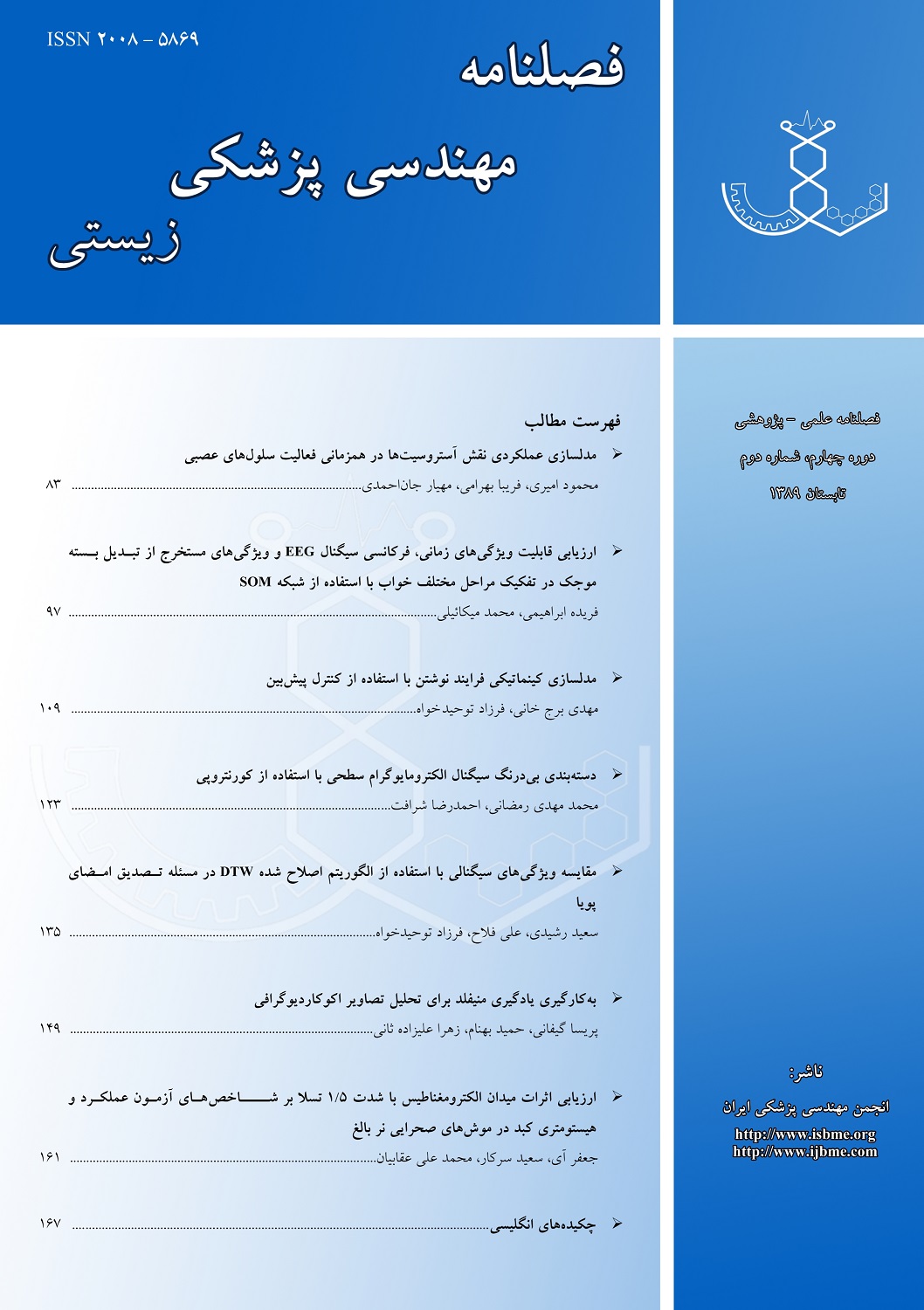نوع مقاله : مقاله کامل پژوهشی
نویسندگان
1 دانشکده مهندسی برق، دانشگاه صنعتی ارومیه
2 دانشیار، آزمایشگاه سایبرنتیک و مدلسازی سیستم های بیولوژیکی، دانشکده مهندسی پزشکی، دانشگاه صنعتی امیرکبیر
چکیده
نوشتن از مهارتهای حرکتی پیچیده در انسان بهشمار میرود. مدلهایی که تاکنون در این زمینه ارائه شدهاند؛ مدلهایی پائین به بالا هستند و در آنها توجه کمتری به جنبههای بیولوژیکی حرکات صورت گرفته است. همچنین مدلی کیفی از فرایند نوشتن که عملکرد نواحی مختلف مغزی را حین انجام این فرایند توجیه کند، وجود ندارد. در این مقاله با استناد به یافتههای نورولوژیکی و فیزیولوژیکی، عملکرد نواحی مختلف مغزی در فرایند نوشتن شرح داده شده است. سپس شواهدی مبنی بر وجود پیشبینی در نوشتن و وجود مدلی درونی ازدینامیک اندامهای بدن نظیر دست ارائه شده است. با توجه به شواهد موجود، مدلسازی فرایند نوشتن با استفاده از روش کنترل پیشبین امکانپذیر است. نتایج نشان دادند مدلسازی این فرایند با استفاده از کنترلکننده پیشبین مبتنی بر مدل، شباهت زیادی با واقعیت و ماهیت این مهارت انسانی دارد. از مزایای این مدل، میتوان به این موارد اشاره کرد: انطباق بالای آن با اصول بیولوژیکی شناخته شده، مدلسازی پیشبینی در نوشتن، همبستگی بسیار زیاد مشخصههای استاتیکی و دینامیکی حروف تولیدی با نمونههای انسانی.
کلیدواژهها
موضوعات
عنوان مقاله [English]
Kinematical Modeling of the Writing Process using Model Predictive Control
نویسندگان [English]
- Mehdi Borjkhani 1
- Farzad Towhidkhah 2
1 Instructor, School of Electrical Engineering, Urmia University of Technology
2 Associate Professor, School of Biomedical Engineering, Cybernetic and biological modeling laboratory, Amir Kabir University of Technology
چکیده [English]
Writing is one of the high practiced and complex movement skills of human. Most of the proposed models for writing are bottom-up models, and therefore they could not reflect the biological aspects of movements in this process. Also there is not any model for illustrating the role of different parts of the brain in this task. In this paper we are going to describe some neurological and physiological aspects of the brain operation in the writing task. Then some evidence of prediction in writing and existence of internal models for limbs such as hand are presented. According to these, modeling of writing using model predictive control (MPC) is possible. Based on the presented simulations and experimental results it seems that the modeling of writing by MPC is very similar to the real skill, The proposed model has some advantages such as being consistent with the biological evidence, modeling prediction in writing and high correlation of the statical and dynamical features of the generated letters with those written by human.
کلیدواژهها [English]
- Writing process
- Internal model
- Cerebellum
- model predictive control
- prediction

